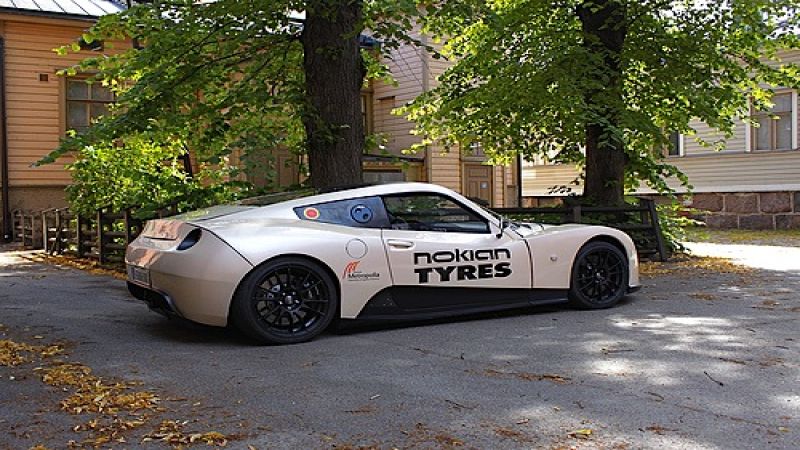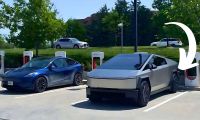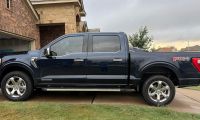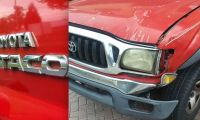There’s no denying, nothing is slowing down or stopping the march forward of the electric car onto our roads. If two years ago the choice was slim, this year we are now approaching the double digit in available electric cars. In the space of a few years, we should easily see twice as much.
Electric cars, EVs have had their fair share of bad reputation. The motors were too slow. They couldn’t handle hills. Batteries are too heavy, they don’t hold charges for a long time. So on, so forth. However, all of this is slowly changing, thanks to the persistence of engineers, pioneering carmakers and people who refuse to have setback dictate what they can do or not. You can either choose to see the potential or bury yourself under seemingly obstacles. Electric cars are happening. It’s a matter of fact, not ideological, and certainly even less sterile political debates.
Dealing With The Cold. If you’ve ever brought your camera on a ski trip, you’ll have noticed that the battery life didn’t last as long as it does in moderate climate. The same holds true if you go on a desert trip. Heat and cold affect battery life. While there are tricks and tweak you can apply to squeeze as much life as possible from them, carmakers have taken the route to use liquids to stabilize the temperature for optimal efficiency. But the world of EV is its in infancy and there are many ways we can improve our rides. This is only the beginning as more and more technology makes it way into making them more efficient.
The Right Tire For The Right Road Condition. In a rainy part of the world, wear rain efficient tires. The same holds true for warmer climates and even more important for colder ones, especially when driving in snowy or icy conditions. A good set of winter tires is the difference between going in straight lines and successfully negotiating curves rather then falling in a ravine. When it comes to snow tires, not too many offer high grade quality. Outside of the well treaded Michelin and its sister company BF Goodridch, another maker we might not have heard of much here in the US is the Finnish tire manufacturer, Nokian Tyres. The manufacturer has a solid variety of tires especially made for cold conditions. A set was tested on a prototype sports EV employing the company’s most recent chemistry that had a most unexpected result. The EV broke the world’s speed record for ice driving on those tires.
Technically Speaking. Students of the Helsinki Metropolia University of Applied Sciences’ high-tech in Finland built the world record holder EV prototype back in 2010. The EV dubbed the E-RA, short for Electric Race About was built from scratch, with the latest technology in electric power trains and battery systems. With its lithium-titanate cells pack rated at 32 kWh, the voltage is 243 – 415 V, with a power output of 268.20 hp, or 200 kW continuous power, it can do bursts of 442.54, or 330 kW for 10 seconds. Its electron consumption is not bad either, with only 14.5 kWh per 60 miles. A fast charging capability would get a depleted pack back to life in 10 minutes using a 250 kW system. The car weighs a svelte 1,212.54 lb, with each cells monitored. Nokian stepped in with their new Nokian Hakkapeliitta 7 studded snow and ice tires to see how they would handle the full torque of an electric motor on ice. The 225/40R18 performed above expectations when test driver Janne Laitinen said she felt she could go really, really fast with them. How fast are you asking? Fancy doing 156.64mph, or 252.09km/h on slippery ice? Sporting a 280-kW electric motor, Janne also experienced the EV spinning out of control and managed to bring it back to stability. This again proved the new tires are very successful even with an electric car speeding on ice.
The significance of this record is two fold. Firstly, EVs still have a lot to offer and continue to prove they can. With continuous world record breaking, it is slowly pitting itself as a seriously viable option to propel cars in the future. The other story is that it spells great news for rally fans who enjoy the particularly spectacular Scandinavian rallies on ice. With Nokian’s Hakkapeliitta 7 studded snow and ice tires and the electric racer E-RA’s ice speed record, this adds to the ever growing record performance of electric cars.












Comments
Dealing with the
Permalink
Dealing with the cold.
Batteries give off heat as they discharge. All that's needed is an initial warming on very cold days. Two ways to get that.
1) Pre-warming while plugged in. Those of us who have lived in very cold places know all about engine block heaters, or the older technique of putting a light bulb under your car hood and an old blanket over the top for the night. You can pre-heat your plugged in EV batteries and passenger compartment using grid power. And you can program it or trigger it by cell phone/computer.
Later on we're likely to see heat pumps that use battery waste heat for passenger comfort.
2) Liquid fuels are great for creating heat. Volvo has designed an ethanol heater for its EV. It can provide heat for both batteries and passengers.
Hi Bob, yes, the Northern
Permalink
In reply to Dealing with the by Bob Wallace (not verified)
Hi Bob, yes, the Northern Countries already know how to deal with this. I was amused to see the engine heater block on Swedish cars, coming form the much warmer Mediterranean part of the world.
In due time we will see smart and low consumption heating systems prop up here and there. I think that's the part I like best about what I do is to see how ingenious the human mind is when confronted with seemingly obstacles.
Thanks for your comment, Nicolas